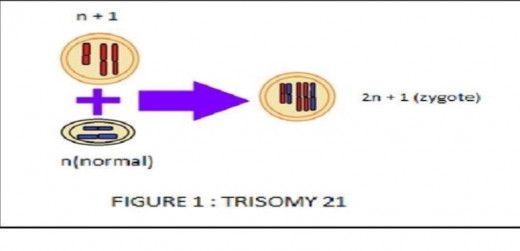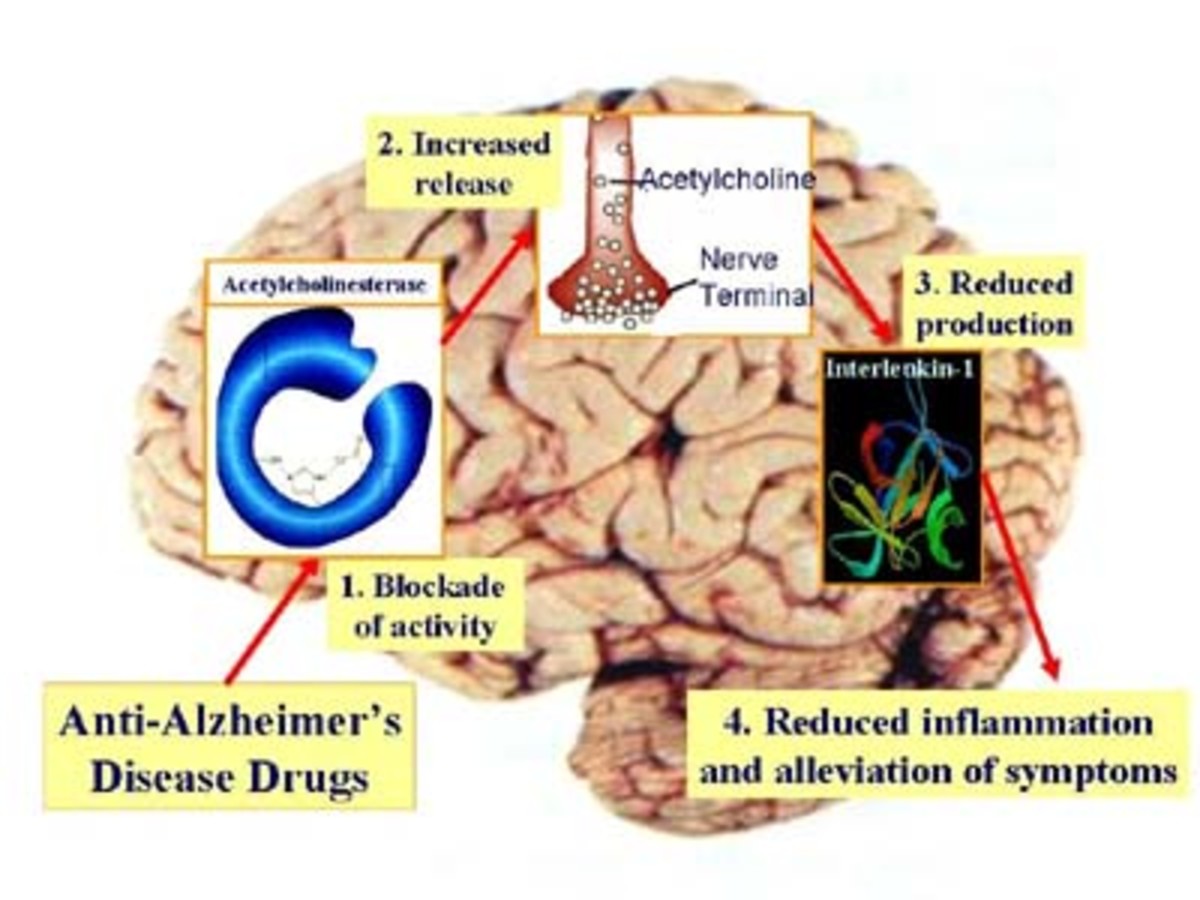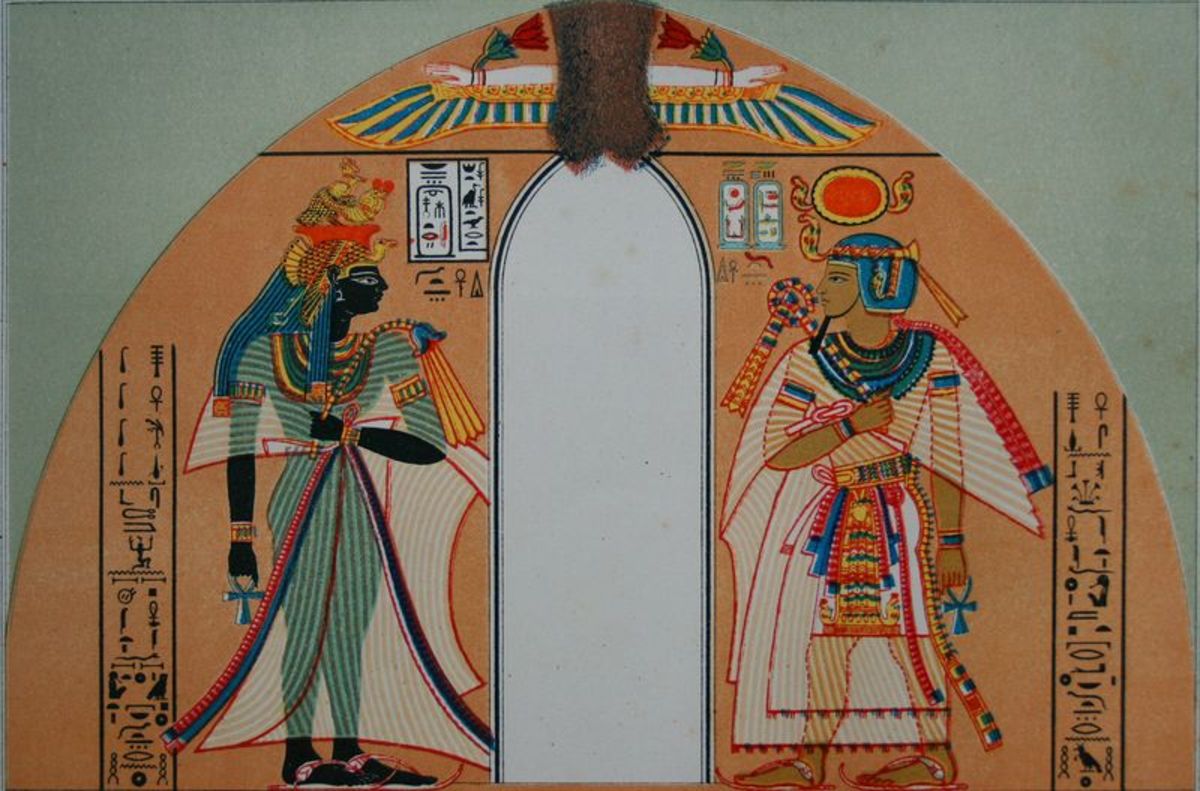Down Syndrome (DS), one of the most typical disorder in human beings.
Trisomy

Down syndrome
These are like Acute myeloid leukemia, Alzheimer disease, thyroid disease, poor muscle tone, neurological disorders. So, basically Down syndrome is categorized as Trisomy21, Robertsonian translocation (ROB) and Mosaicism. But among these, Trisomy21 results in development of Down syndrome. Where chromosome21 which is considered to be an extra chromosome that is entangled with this syndrome . An individual suffering from Down syndrome should frequently visit specific consultant . Numerous techniques are carried out for the diagnosis of Down syndrome but till date it is not verified to be the accurate way to process in every sufferer. Other than this epigenomic therapies can help in silencing the genes involve, mostly HSA21 that is found in extra chromosome. Its various molecular pathogenesis are so far not known for which the syndrome is unable to surpass for better improvement in medicaments.
INTRODUCTION:
Down syndrome is the widespread of genetic disabilities that can cause various intellectual disorders as well as various other health issues (1,2). Inborn heart disease, gastrointestinal defects, infections, ear and hearing deficiencies, childhood leukemia, disorders related to immune system and thyroid disease are some of the problems related to health occur in infants with down syndrome (3). In few published studies there are certain vision disorders too which are most commonly observed in children with DS are refractive errors, strabismus, nystagnus, cataract(4). People with DS often faces atrioventricular septal defects which is a heart malformation which can lead to development of early onset Alzheimer disease(5).
During 15th and 16th centuries, many scientist illustrated the syndrome through various paintings. In 1866, John Langdon Down, an English physician, first recognized Down syndrome. In his honour this disease was named as Down Syndrome. But it remained unknown till the middle of 20th century. Down syndrome is a birth defect which is effected by trisomy of a portion or entire chromosome 21. In 1932, Waardenburg and Davenport suggested that chromosomal abnormality can be result from trisomy 21. Thus, it was finally determined in 1959 that the source of Down syndrome is the occupancy of the extra copy of chromosome21 after 6 years of elucidating the molecular structure DNA (4,32).
Chromosome 21 is considered as the smallest human autosome including 48 million nucleotides. There are approximately more than 400 genes considered to be on chromosome 21. The length of 21p and 21q in this chromosome are 5-15Mb and 33.5Mb. (6)
FEATURES OF DOWN SYNDROME:
The various forms of DS are as follow:- 1.Free Trisomy
Mosaic Trisomy
Translocation Trisomy
It has been seen that 95% cases are of free trisomy 21 which occurs due to paternal meiotic non- disjunction. Robertsonian translocation is shown in 2-4% cases and mosaicism is shown in 1- 3% cases (7).
The various genes involved in chromosome 21 are- Ribosomal RNA processing homolog 8(RRP8), Leukocyte adhesion defiency (LAD), Transmembrane protease, serine3(TMPRSS3), Potassium voltage-gated channel isk-related family, member 2(KCNE 2), Calcium binding protein(S100B), Amyloid beta precursor protein (APP), Holocarboxylase synthetase(HLCS), Leukocyte adhesion deficiency(LAD), Cystathionine-betasynthase(CBS), Calcium binding protein(S100B), Claudin 14 (CLDN14), Chromosome 21 open reading frame 59(C21 or f59). There are many more theories that are put forward to understand the phenotypic and genotypic correlations (1).
When an error in cell divison occur leading to an embryo of chromosome 21 with three copies, trisomy 21 which is the major cause of DS is formed. And the error is named as nondisjunction. In the case of translocation, one segment of chromosome21 is shifted to another chromosome (chromosome14 or chromosome15). When an additional piece of chromosome 21(Robertsonian translocated chromosome) is inherited and combined with other two same copies of chromosome 21, Down syndrome will take place. The third variety of DS, mosaicism, ia a rare formand caused only by abnormality of cell divison after fertilization. The translocation and mosaicism are basically known to have hereditary components.(6)
INCIDENCE OF DOWN SYNDROME:-
The prevalence of Down syndrome is one of the most familiar intellectual disability (ID) related to genetic disorders in the world (8). Intellectual disabilities (ID) is about 15-20% alone in Down syndrome(DS) all over world (9).From the report of WHO, the world rate of incidence is to be 1 in 1000 to 1 in 1100 (10). India varies from 0.81-1.2 in 1000 live births (11). When a survey conducted in western countries there it showed 22% psychiatric disorders, 75% ear infection, 60% DS population from eye disease and 50% heart disease. From a recent report of 94,910 newborns in three citites of India — Delhi, Baroda and Mumbai, the Down syndrome frequency was found out 1 per 1150 (12). In Japan , Transient abnormal myelopoiesis (TAM) is estimated
0.58 per 10,000 live births (13). In a case study among 77 children suffering from DS, 13% refused to interact and rest had a level of self — awareness (14).
SYMPTOMS AND DISORDER Of DOWN SYNDROME:-
On the basis of medical record review of psychiatric disorder down syndrome has reported 12% autistic disabilities. Within children of aged 2-11 with down syndrome, the assistance of ASD is much more than normal children (17). Distinctive neurological ailments which are linked with abnormal brain structure via neuronal migration pathways are caused by the centromeres which are inculpated in a number of cellular processes (18). Historically this mechanism may perhaps be related to autism spectrum disorder (ASD) as zone specific where imbalanced early brain overgrowth was found in children with Down syndrome (19). Various studies has been checked for the comparison of children with Intellectual disability and found that kids with DS not perform well in LTM (Long Term Memory) tasks. But when children (down syndrome) are beared compared with children (Williams syndrome) they have similar performances like verbal list learning, long-delay recalls and even good presentation on a word list learning task (20). The risk of developing leukemia is 10-20% more in those children facing Down syndrome as compared to non DS children.
There are few cases in clinical analysis which shows that approx. 3% of pediatric ALL (acute lymphoblastic leukemia) and almost 15% of acute myeloid leukemia (AML) comprise in children with down syndrome. There are new perception have been provided from recent studies into unique pathogenesis, epidemiology, response to treatment of acute lymphocytic leukemia (ALL) and acute myeloid leukemia (AML) in children with Down syndrome. AML takes place in children with down syndrome at a younger age which is elucidated by GATA1 mutations and shown rapid susceptibility to antineoplastic agents i.e arabine and anthracyclines (21). Mental age of individual with down syndrome performs a major role in a potential to make a self concept and affect the evaluation due to their mental disability and less or limited skill of languages. In a study, only the individual with DS with the mental age of 8 or above are able of forming parallel social relations and forming critical sections of their dysfunction. For analysing self concept in this occupants various techniques i.e. interviews, mailed survey, standardized tests and photographs etc. are identified that the individuals with down syndrome has been holding views about themselves which were mostly positive(22). To assign self concept in 266 individuals with down syndrome who are 12-40 years old a survey is done by in which they
found that almost 99% were happy with their lives as well as looks and who they are. In this, authors also find several limitations in study which are deficit of direct inspection and elimination of less or non-working citizens with down syndrome who were not able to complete the mailed survey (23).
HEALTH CONDITIONS:-
The individuals which are suffering from down syndrome may have various health related problems. These are:
Impairment in hearing:
Sometimes there is fluid build up in the ears of children with down syndrome which may cause hearing problems in 1 or both ears.
Heart disease:
Almost in half number of babies with down syndrome may have heat problems i.e shape and working of heart.
Sleep Apnea :
During sleep there is a problem of stop and restart of breathing (which is usually treatable)
Problem in Eyesight:
There is a problem in eyesight of about half of the individuals with Down syndrome.
Blood disorder:
There is a higher chance of having leukemia in individuals having Down syndrome.
Mental illness:
In individuals having down syndrome, there is loss of memory and less mental skills and these symptoms are start around the age of 50. There are more chances in people with DS of experiencing Alzheimer's disease than people with non DS (25).
Accumulation of DNA damage:
Exogenous or endogenous genetic damages accumulate throughout life and participate in the process of ageing. There are various evidence-based lines which suggests that Down syndrome is associated with DNA repair defect.(26)
Other illness:
Individuals with DS have weaker immunity and get sick more often than the individuals with non DS.
THERAPIES AND DIAGNOSTIC METHODS:-
Almost 66-84% infants have symptoms without taking any intervention (27) .But its necessary for a child suffering from Down syndrome to consult with the following consultants-
Cardiologist
Pediatric pneumonologist
Clinical geneticist
Neurosurgeon Or Neurologist
Developmental pediatrician
Ophthalmologist
Physical and occupational therapist
Audiologist as well as speech language pathologist
Psychiatrist (1)
In some trials, for curing blasts counts having more than 100K/uL, heart failure, hyper viscosity, liver dysfunction, leukapheresis and exchange transfusion were provided successfully. Children suffering from Myeloid leukemia down syndrome requires chemotherapy to get respite. If we compare it to Non-down syndrome pediatric acute leukemia, it can be treated using low intensity of chemotherapy without transplantation of stem cells. This is accepted due to high toxicity level of treatment in children having down syndrome.(27)
For the past 10 yrs, several methods are developed for detecting Down syndrome.Some of the techniques involved for diagnosis of Down syndrome are like:-
Multiple probe ligation assay (MPLA)
Cytogenic analysis
Quantitative analysis- Polymerase chain reaction(QA-PCR)
Next generation sequencing(NGS)
Fluorescence in situ hybridization(FISH)
Paralogue sequence quantification(PSQ)
FISH was first introduced in mid 1990s where it can be tested using aminocytes that are uncultured. This technique was found out as a rapid aneuploidy testing(1). Alzheimer disease with Down syndrome is a challenge as its a baseline functioning with pre-existing disabilities that may vary in type within population. Therefore, biomarkers are used because it has the ability to not only diagnose but also tracks the progression of disease and effectiveness of the treatments. Individuals having epilapsy disorders can be determined using High resolution electroencephalography(28) .For diagnosis of Trisomy21 , the various DNA diagnostic methods involved to PCR was introduced as a sensitive, efficient and also reproducible. This was carried out using short tandem markers (STR)- D21S2055 and D21S11. Based on the research, these two STR markers detected 86.7% cases involved in trisomy. (29)
The various epigenomic therapies can also be used to make an improvement in the phenotypes of DS. This therapy is implemented using Clustered Regularly Interspaced Short Palindromic Repeats (CRISPR). Its an unique tool that came up to be expressive towards epigenetic targets in Down syndrome. This tool helps in gene deletion or modification of DNA methylation. In he case of DS, it can delete the over expressive HSA21 genes or can also silence the chromosome involved (30). DS are cognated with some nuclear factors like NRF2 signaling pathway. It is a regulator of Antioxidant response elements (ARE). NRF2, a cytoplasmic protein therefore require to maintain the cellular function and viability of trisomic cells(31).
CONCLUSION:-
The lethal fact of most of the countries is non-awareness, negligence, various technical facilities related to some outdated medical approaches. So it is needed to make proper strategies which can encourage for developing a healthy lifestyle among the people suffering from Down syndrome. From some recent study, it has been found that there is a high risk of chronic arthritis in children. Despite of all this, there is no specific cure found till date. Moreover various molecular pathogenesis involved with DS are still unknown.
REFRENCES:-
Asim, A., Kumar, A., Muthuswamy, S., Jain, S. and Agarwal, S., 2015. Down syndrome: an insight of the disease. Journal of biomedical science, 22(1), p.41.
Hartley, D., Blumenthal, T., Carrillo, M., DiPaolo, G., Esralew, L., Gardiner, K., Granholm, A.C., Iqbal, K., Krams, M., Lemere, C. and Lott, I., 2015. Down syndrome and Alzheimer's disease: Common pathways, common goals. Alzheimer's & Dementia, 11(6), pp.700-709.
Pikora, T.J., Bourke, J., Bathgate, K., Foley, K.R., Lennox, N. and Leonard, H., 2014. Health conditions and their impact among adolescents and young adults with Down syndrome. PLoS One, 9(5), p.e96868.
Satgunam, P., Datta, S. and Sumalini, R., 2019. Near vision in individuals with Down syndrome: a vision screening study. Eye, p.1.
Wiseman, F.K., Al-Janabi, T., Hardy, J., Karmiloff-Smith, A., Nizetic, D., Tybulewicz, V.L., Fisher, E.M. and Strydom, A., 2015. A genetic cause of Alzheimer disease: mechanistic insights from Down syndrome. Nature Reviews Neuroscience, 16(9), pp.564-574.
Kazemi, M., Salehi, M. and Kheirollahi, M., 2016. Down syndrome: current status, challenges and future perspectives. International journal of molecular and cellular medicine, 5(3), p.125.
Kadakol, G.S., Bagoji, I., Patil, S.V. and Bulagouda, R.S., 2019. Cytogenetic Analysis of Down Syndrome. International Journal of Clinical and Biomedical Research, pp.37-40.
Patterson, D. and Costa, A.C., 2005. History of genetic disease: Down syndrome and genetics— a case of linked histories. Nature Reviews Genetics, 6(2), p.137.
Understanding Intellectual Disability and Health. Down Syndrome.Available from: http://www.intellectualdisability.info/diagnosis/downs-syndrome/. [Last cited on 2014 Jun 29]
Rao, K.S., 2007. Mechanisms of disease: DNA repair defects and neurological disease. Nature Reviews Neurology, 3(3), p.162.
Satgunam, P., Datta, S. and Sumalini, R., 2019. Near vision in individuals with Down syndrome: a vision screening study. Eye, p.1.
Lakhan, R. and Kishore, M.T., 2016. Down syndrome in tribal population in India: A field observation. Journal of neurosciences in rural practice, 7(1), p.40.
Watanabe, K., 2019. Recent advances in the understanding of transient abnormal myelopoiesis in Down syndrome. Pediatrics International, 61(3), pp.222-229.
Cunningham, C. and Glenn*, S., 2004. Self‐awareness in young adults with Down syndrome:
I. Awareness of Down syndrome and disability. International Journal of Disability, Development and Education, 51(4), pp.335-361.
Nichols, M., Button, S., Hoople, K. and Lappan, L., 2016. Early Identification, Palliative Care, and Prevention of Psychotic Disorders in Children and Youth. American Mental Health Foundation
O'Toole, C., Lee, A.S.Y., Gibbon, F.E., van Bysterveldt, A.K. and Hart, N.J., 2018. Parent‐ mediated interventions for promoting communication and language development in young children with Down syndrome. Cochrane Database of Systematic Reviews, (10).
Hadland, S.E., Knight, J.R. and Harris, S.K., 2015. Medical marijuana: Review of the science and implications for developmental behavioral pediatric practice. Journal of developmental and behavioral paediatrics: JDBP, 36(2), p.115
Badano, J.L., Teslovich, T.M. and Katsanis, N., 2005. The centrosome in human genetic disease. Nature Reviews Genetics, 6(3), p.194.
Courchesne, E., Pierce, K., Schumann, C.M., Redcay, E., Buckwalter, J.A., Kennedy, D.P. and Morgan, J., 2007. Mapping early brain development in autism. Neuron, 56(2), pp.399-413.
Godfrey, M. and Lee, N.R., 2018. Memory profiles in Down syndrome across development: a review of memory abilities through the lifespan. Journal of neurodevelopmental disorders, 10(1), p.5.
Tran et al. Infectious Agents and Cancer 2013
This content is accurate and true to the best of the author’s knowledge and is not meant to substitute for formal and individualized advice from a qualified professional.
© 2020 Rishu101








